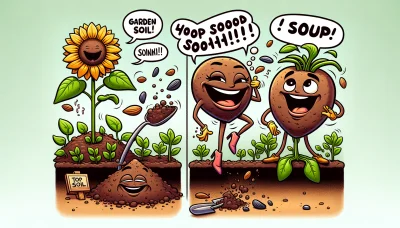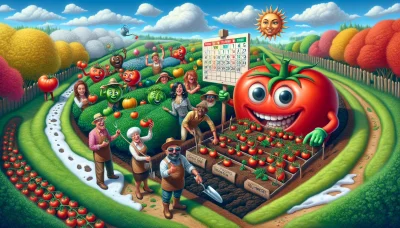How to tell if persimmons are ripe Quiz
Test Your Knowledge
Question of
How to Tell If Persimmons Are Ripe
For gardeners and fruit enthusiasts alike, understanding the ripeness of persimmons is crucial. These unique fruits offer a delightful taste when ripe, but can be unpleasantly astringent if eaten too early. Knowing the right time to pick or purchase persimmons can greatly enhance your culinary experiences and ensure you get the most out of this seasonal delight.
Types of Persimmons
- Fuyu: This type of persimmon is squat and round and can be eaten like an apple. Its flesh is sweet and crunchy, not astringent, and can be consumed while still firm.
- Hachiya: Hachiya persimmons are acorn-shaped and are known for their astringent quality when unripe. They become sweet and jelly-like when fully ripe. These are often used in baking.
- Chocolate Persimmon: Named for its brownish flesh, the Chocolate Persimmon has a sweet, spicy flavor. It's non-astringent and can be eaten while firm or soft.
- Tanenashi: A cone-shaped, astringent variety that is best enjoyed when fully soft and ripe. It has a sweet and delicate flavor, often used in traditional Asian desserts.
- Maru (or Cinnamon Persimmon): Known for its round shape and distinctive spicy-sweet flavor, this non-astringent persimmon contains brown flecks in its flesh, resembling cinnamon.
- Giombo: A large, heart-shaped astringent variety that becomes very soft and sweet when ripe. It is often dried or eaten fresh.
Visual Signs of Ripeness
As persimmons ripen, their color and appearance undergo significant changes. Initially, unripe persimmons have a bright orange hue that deepens and darkens as they mature. The skin becomes more translucent and glossy, and the fruit softens to the touch. These transformations indicate that the persimmons are becoming sweeter and reaching their peak ripeness, making them perfect for consumption.
- Deep orange to red color
- Soft to the touch
- Glossy, translucent skin
- Leaves may begin to wilt
Texture and Feel
The texture of a persimmon is a reliable indicator of its ripeness and readiness for consumption. A ripe persimmon should feel soft yet not mushy to the touch, suggesting that its flesh is sweet and tender, ideal for eating. Unripe persimmons tend to be quite firm, and their astringent qualities can make them unpleasant to eat. As the fruit matures, its skin will also transition from a glossy to a more matte finish, further signaling its readiness. Gently pressing the fruit, if it yields slightly under pressure, it's an indication that the persimmon has reached its peak ripeness and is ready to be enjoyed.
Taste Test
Tasting a small piece of the fruit can be a revealing method to determine its ripeness. This approach is particularly useful with fruits like persimmons, which undergo significant changes in flavor and texture as they ripen. However, caution should be exercised with unripe persimmons, as they contain tannins that can cause an unpleasant astringent taste. This astringency diminishes as the fruit matures, transforming into a sweet and enjoyable flavor when fully ripe.
Storing Persimmons
To ripen persimmons further, store them at room temperature away from direct sunlight. Placing them in a paper bag with an apple or a banana can speed up the ripening process because these fruits emit ethylene gas, which encourages ripening. Once persimmons have reached your desired ripeness, you can prolong their shelf life by storing them in the refrigerator. To keep them ripe and ready to eat, place them in the crisper drawer of your refrigerator. This cooler environment slows down the ripening process, allowing you to enjoy your persimmons for a longer period. Remember, it's best to keep them in a plastic bag or container to prevent them from absorbing odors from other foods.
Common Mistakes to Avoid
- Relying solely on color to determine ripeness
- Not considering the variety of the fruit
- Ignoring texture, which is a crucial indicator of ripeness
- Not taking into account the fruit's aroma
- Assuming all persimmons ripen at the same rate
- Forgetting to check for a slight give when gently pressed
- Overlooking the importance of the stem and leaf condition
- Expecting non-astringent varieties to soften like astringent ones before eating












